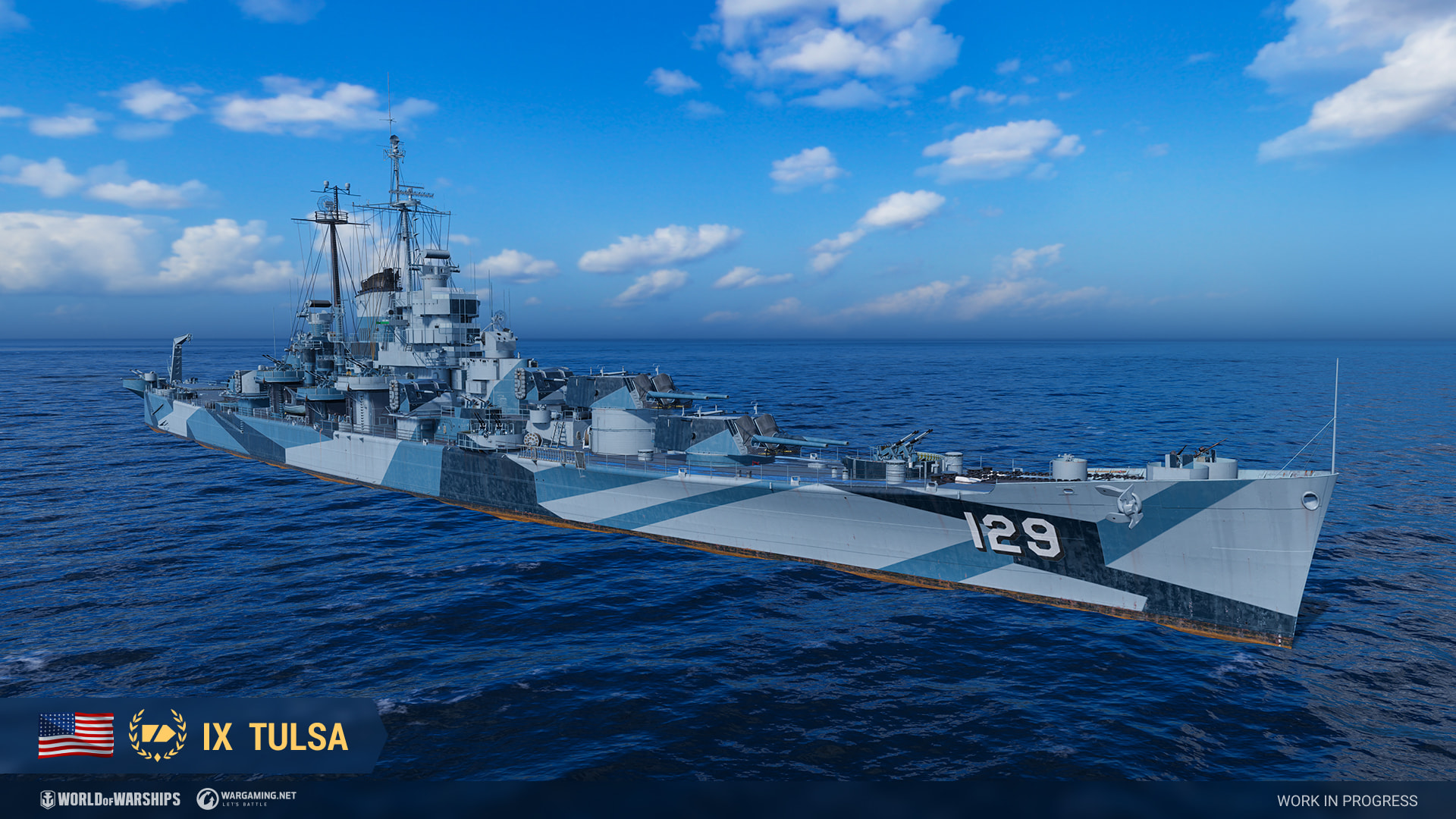Supertest: U.S. Tier IX Premium Cruiser Tulsa
4 min readHistorical background
In May 1943, the U.S. Bureau of Ordnance proposed a new 203 mm rapid-firing gun. It was designed to be mounted in twin or triple mounts with the former being what would become the main battery of the Des Moines-class cruisers.
At the same time, the Bureau wanted these new guns to be incorporated on existing U.S. cruiser hulls. The triple turrets would have been far too complex to mount on existing hulls because of the much larger cylindric barbette that was required. However, it would have been feasible for the twin turret version and it was considered that the barbettes and roller paths of the previous slow-firing 203 mm could be used.
In the end, the project never became a reality. However, if it ever came to be, the Tulsa, the 8th ship of the Oregon City-class of heavy cruisers, could have been a potential candidate.
In World of Warships, Tulsa isn’t trying to reinvent the wheel and presents the classic characteristics of a high-tier U.S. cruiser with the exception that, compared to the rest, she only gets a 9 km Surveillance Radar.
Ship’s preview
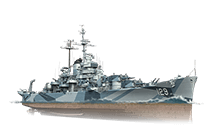
Ship’s commemorative flag

Camouflage
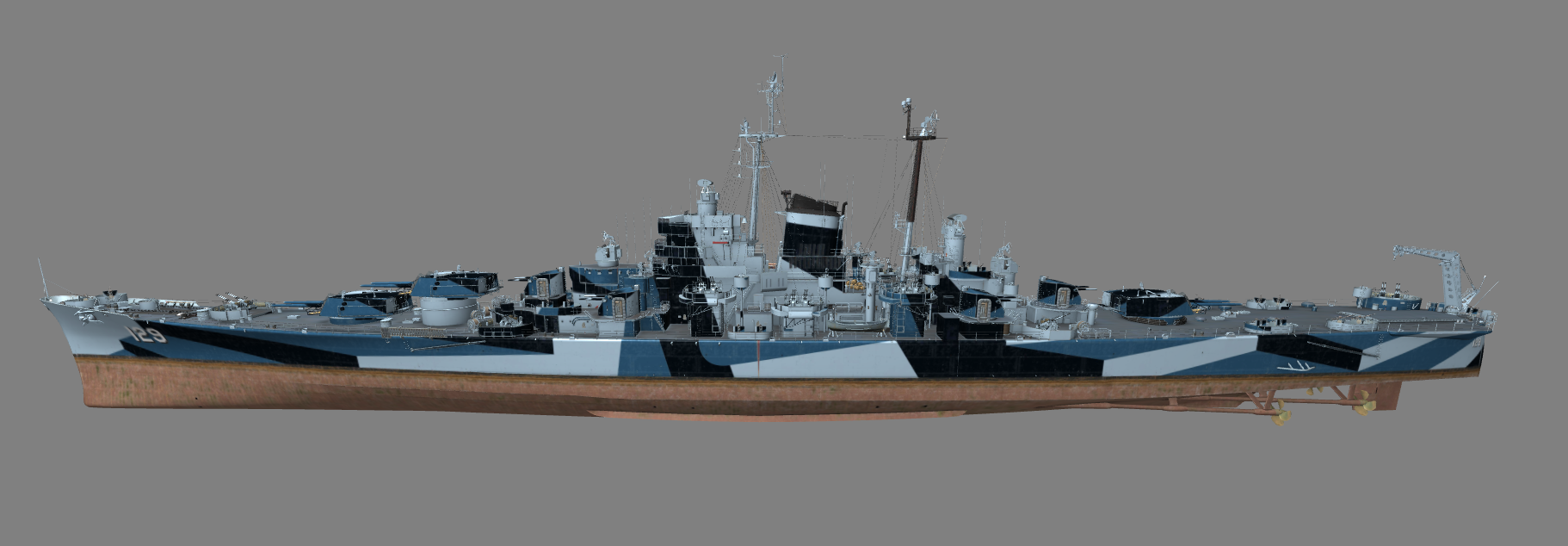

For the classic reminder, this is a ship in testing, anything can change so don’t look at her like she would already be released.
![]()
Modules
Hull | Engine | Gun Fire Control System | Main battery |
Tulsa |
Propulsion: 120 000 HP |
Mk9 mod. 1 | 203 mm/55 RF Mk.16 in a turret |
General Characteristics
| Tier | IX |
| Health | 42 700 HP |
| Torpedo Damage Reduction | 13 % |
| Displacement | 17 070 tons |
| Dimensions | |
| Overall length | 205.78 m |
| Beam | 21.59 m |
| Overall height (keel to the highest point on the ship) | 24.0 m |
| Freeboard | 5.36 m |
| Main Armament | |
| Maximum Firing Range | 14.860 km |
| 203 mm/55 RF Mk.16 in a turret | 3 x 2 203 mm |
| Secondary Armament | |
| Maximum Firing Range | 6.950 km |
| 127 mm/38 Mk.12 on a Mk.32 mount | 6 x 2 127 mm |
| Maximum speed | 33.0 knots |
| Turning Circle Radius | 750 m |
| Rudder Shift Time | 10.5 s |
| Surface Detectability | 12.06 km |
| Air Detectability | 7.25 km |
| Detectability After Firing Main Guns in Smoke | 6.79 km |
Main Armament
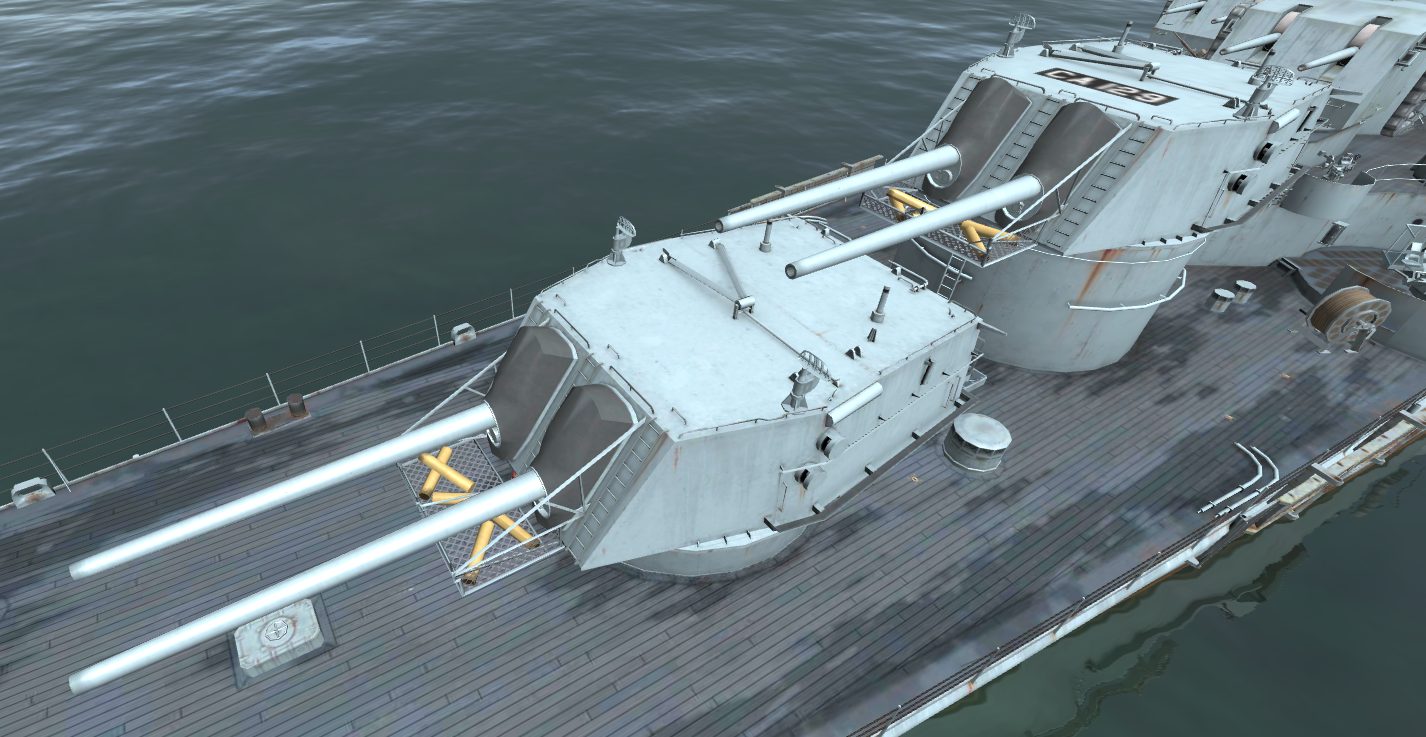
| 3 x 2 203 mm/55 RF Mk.16 in a turret | |
| Maximum Firing Range | 14.860 km |
| Reloading Time | 5.5 s |
| 180 Degree Turn Time | 30.0 s |
| Optimal firing angles at the front | 30° |
| Optimal firing angles at the rear | 25° |
| Sigma | 2.05 sigma |
| Maximum Dispersion | 136 m |
| Shells | |
| Type of Projectile | HE – 203 mm HE/HC Mk25 |
| Alpha Damage | 2 800 |
| Damage | 1 220 |
| Penetration capacity | 34 mm |
| Explosion size | 0.86 |
| Fire chance | 14 % |
| Projectile Speed | 823 m/s |
| Air Drag | 0.333 |
| Projectile Mass | 118 kg |
| Type of Projectile | AP – 203 mm AP Mk21 |
| Alpha Damage | 5 000 |
| Projectile Speed | 762 m/s |
| Air Drag | 0.356 |
| Projectile Mass | 152 kg |
| Projectile Krupp | 2 919 |
| Projectile Detonator | 0.033 s |
| Detonator threshold | 34 mm |
| Ricochet Angles | 60° – 67.5° |
Secondary Armament
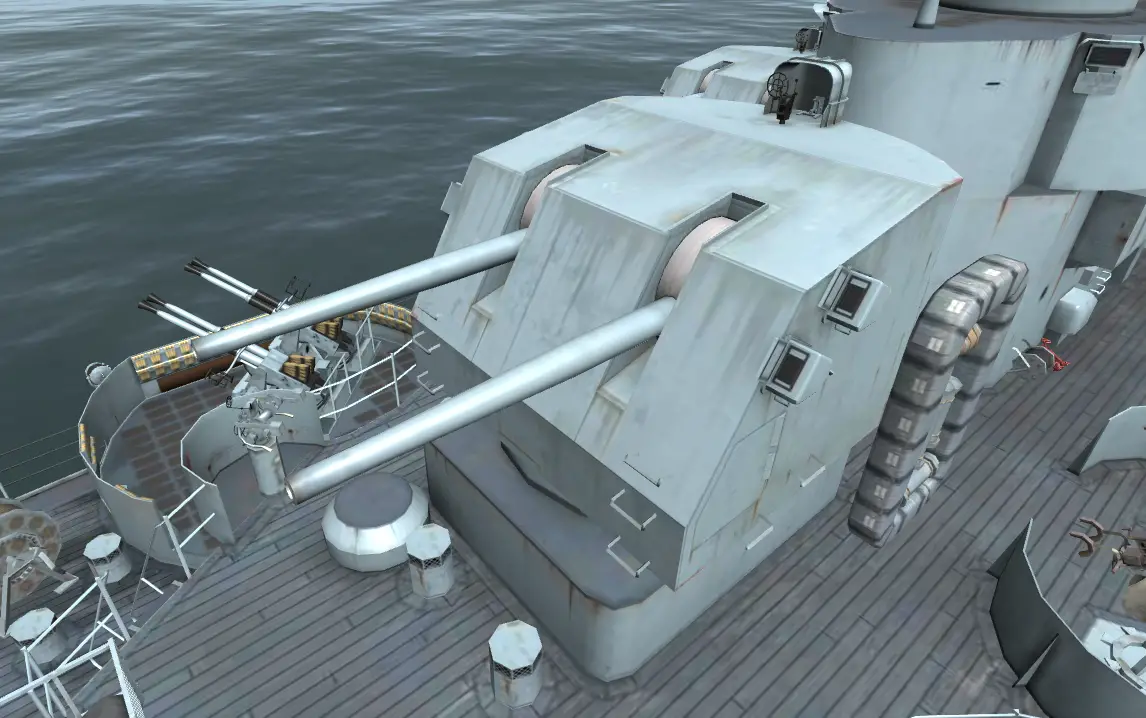
| 6 x 2 127 mm/38 Mk.12 on a Mk.32 mount | |
| Maximum Firing Range | 6.950 km |
| Reloading Time | 6.0 s |
| Sigma | 1.0 sigma |
| Shells | |
| Type of Projectile | HE – 127 mm HE Mk32 |
| Alpha Damage | 1 800 |
| Damage | 380 |
| HE penetration | 21 mm |
| Explosion Size | 0.38 |
| Chance to Cause Fire | 5 % |
| Projectile Speed | 792 m/s |
| Air Drag | 0.347 |
| Projectile Mass | 24.5 kg |
Anti-air Armament
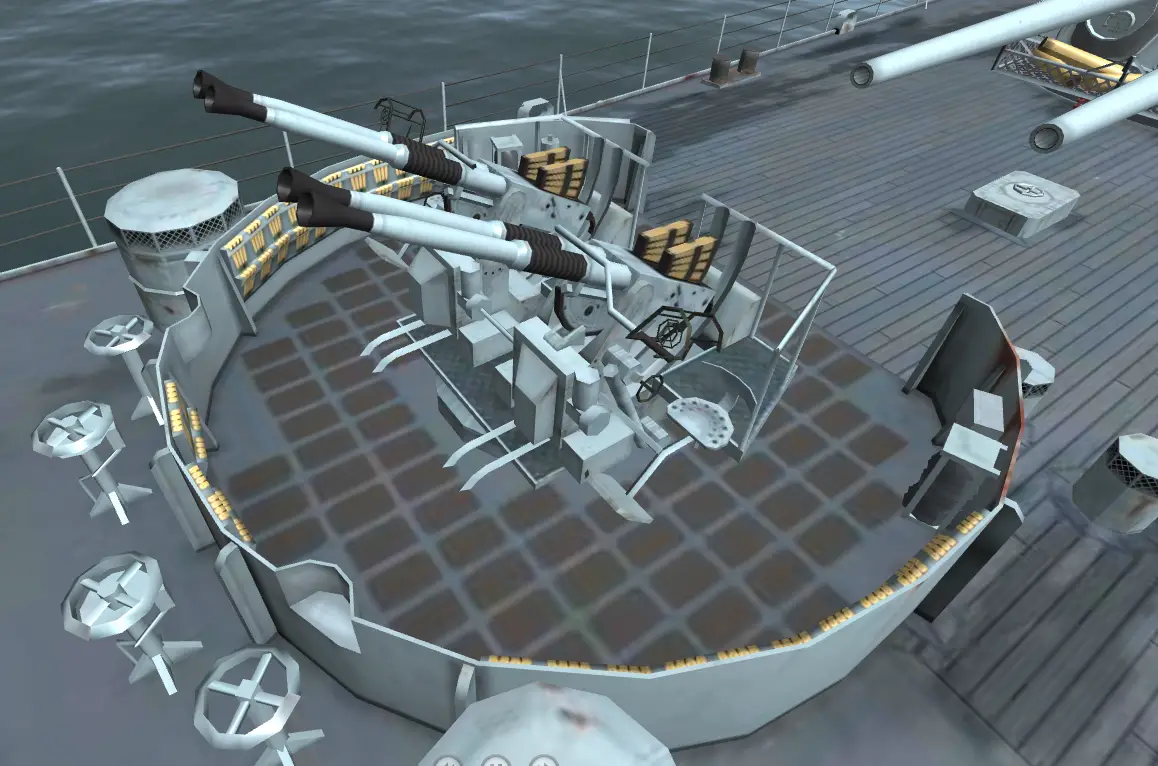
| 6 x 2 127 mm/38 Mk.12 on a Mk.32 mount | |
| Sector range | 0.1 km – 5.8 km |
| Hit chance | 90 % |
| Sector’s damage | 31 |
| Sector’s damage frequency | 0.29 s |
| Sector’s damage per second | 109 |
| Flak clouds number | 5 |
| Flak cloud damage | 1 610 |
| 12 x 4 40 mm Bofors on a Mk.2 mount | |
| Sector range | 0.1 km – 4.0 km |
| Hit chance | 90 % |
| Sector’s damage | 93 |
| Sector’s damage frequency | 0.29 s |
| Sector’s damage per second | 326 |
| 23 x 1 20 mm Oerlikon on a Mk.10 mount | |
| Sector range | 0.1 km – 3.0 km |
| Hit chance | 85 % |
| Sector’s damage | 58 |
| Sector’s damage frequency | 0.29 s |
| Sector’s damage per second | 203 |
Consumables
Slot 1 | Slot 2 | Slot 3 | Slot 4 |
Damage Control Party  Work time: 5 s Work time: 5 sCooldown: 60 s | Defensive AA Fire  Number of charges: 3 Number of charges: 3Work time: 40 s Cooldown: 80 s Continuous Damage: +50% Damage from shell explosions: +300% | Surveillance Radar  Number of charges: 3 Number of charges: 3Work time: 35 s Cooldown: 120 s Ship spotting range: 9.0 km | Repair Party  Number of charges: 3 Number of charges: 3Work time: 28 s Cooldown: 80 s HP regeneration: 0.5%/s Casemate damage regeneration: 50% Citadel damage regeneration: 30% |
Hydroacoustic Search  Number of charges: 3 Number of charges: 3Work time: 100 s Cooldown: 120 s Torpedo spotting range: 3.5 km Ship spotting range: 5.0 km |
The Armor
External armor protection:

Front and rear armor protection of the middle section:
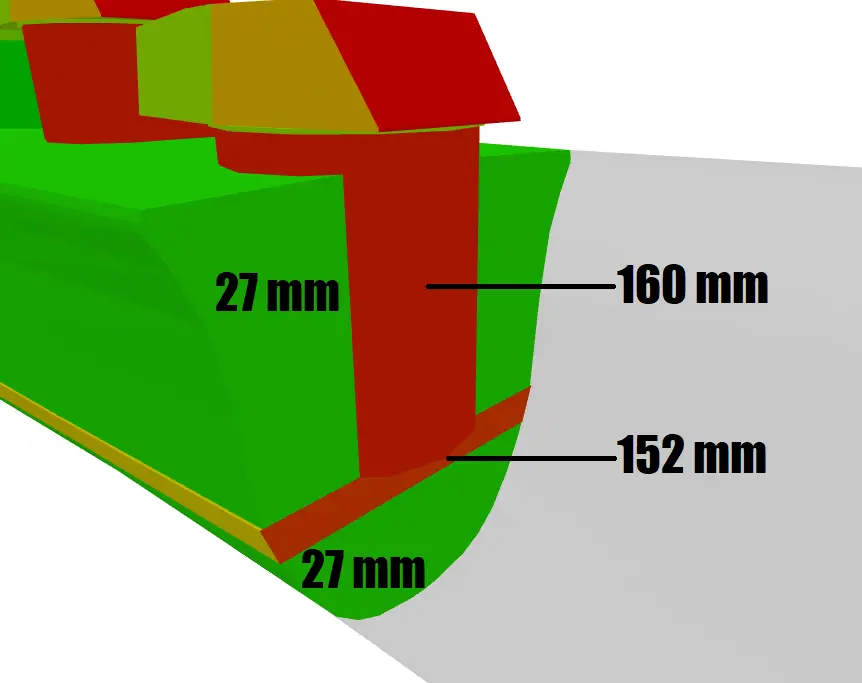
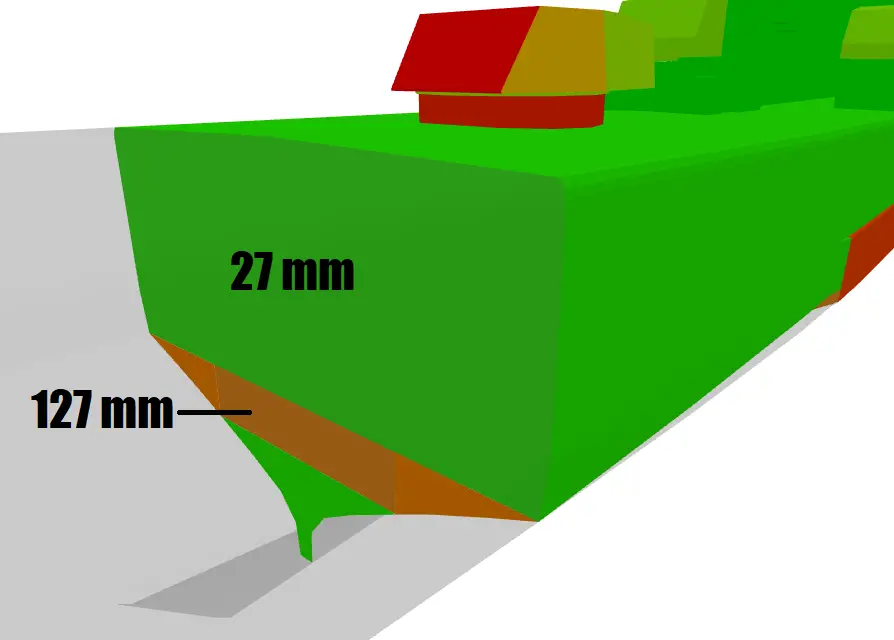
Citadel armor protection:

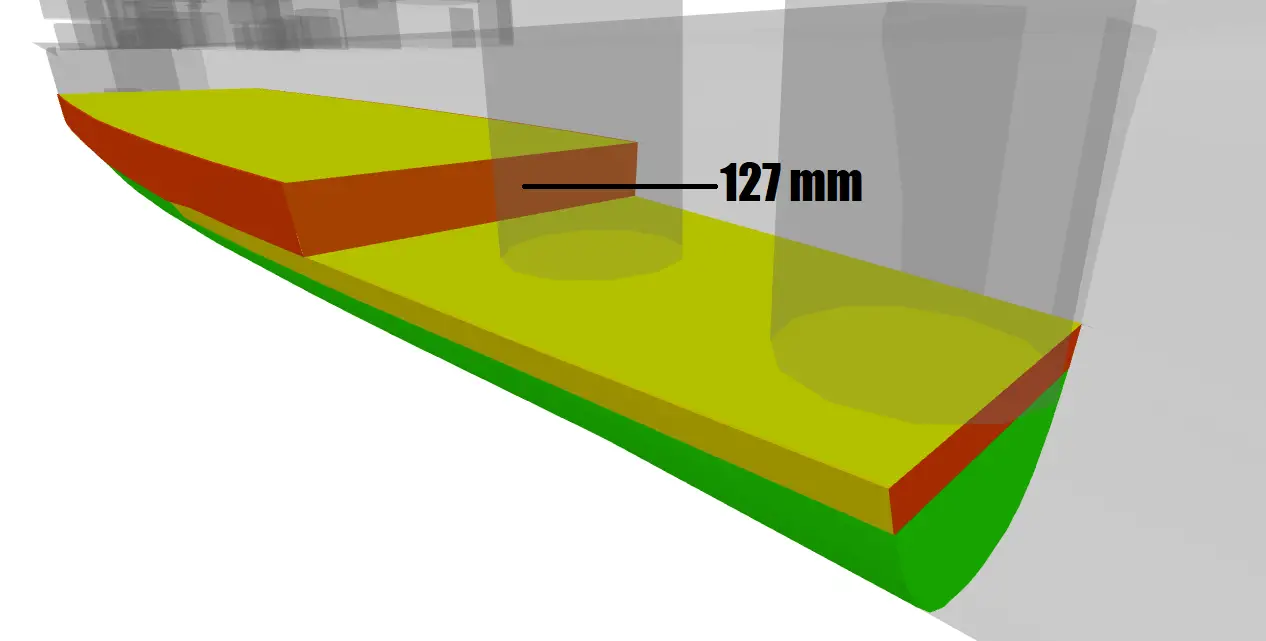
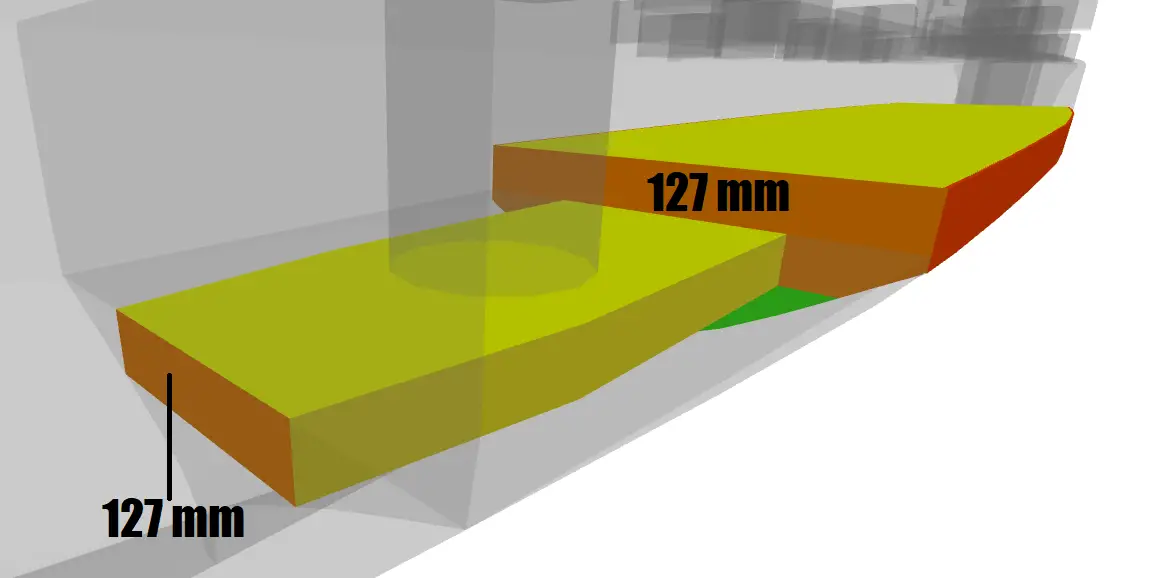
Turrets armor protection:
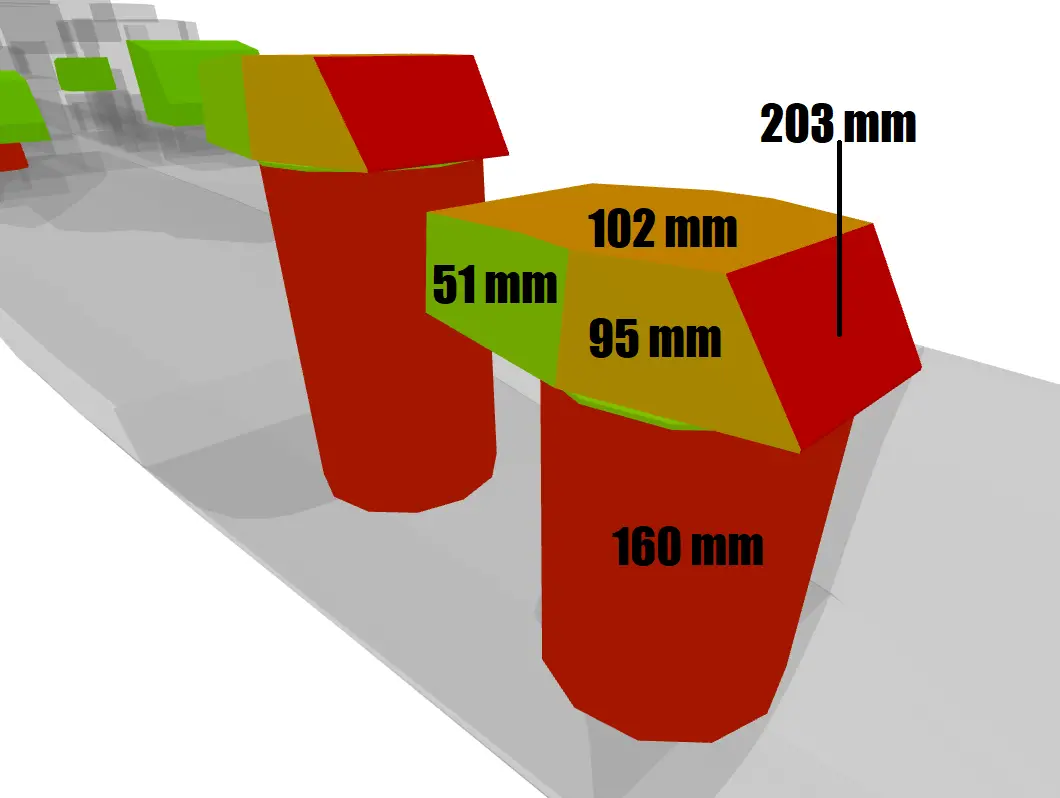
Personal Opinion
Soooo… who needs a tier IX Des Moines?
On paper, the Tulsa definitely looks scary, even with just two-thirds of Des Moines’ firepower.
For reference, her theoretical DPM on the HE is 183 273 and for the AP, 327 273.
Buffalo only has 168 000 DPM on the HE and 300 000 DPM on the AP. Of course, Buffalo is more focused on delivering big salvo thanks to the high alpha damage but it still gives you an idea of how much damage Tulsa can pump out while “only” having 6 guns.
She also gets great concealment with the minimum surface detecting range being at 9.47 km.
Everything isn’t all nice and shiny though. Tulsa has 2 non-neglectable downsides. First and foremost, her lack of range with only 14.860 km. For a high-tier cruiser, it starts being a bit too short and running the range upgrade might be something to consider.
Also, the ship is quite squishy and with a below-average HP pool so mistakes in positioning and engagement choices will be punished hard.
As a final downside (kinda), unlike Des Moines, Tulsa doesn’t get that sweet unique upgrade that allows her to accelerate ultra fast.
Thank you for reading this article!
Don’t hesitate to subscribe to our notifications to make sure that you don’t miss any future articles.
Have a good one and see you soon!

